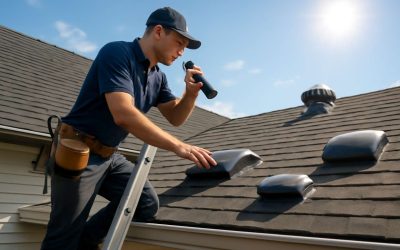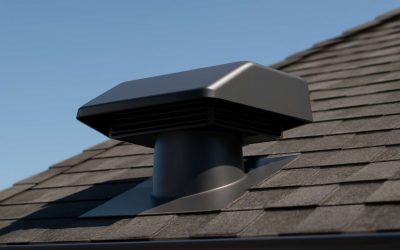
You might have seen these round little knobs poking out from residential roofs and wondered what they were all about – the good news is, you can use them to improve your energy efficiency at home. The whirlybird vent is a type of roof ventilation system that works to prevent heat from building up in the attic or roof space, so your air conditioning doesn’t have to work as hard during the hot Australian summer.
Whirlybirds are a popular roof ventilator, especially in Australia. They can be installed on any kind of roofing material, including metal roofs, tiles, and asphalt shingles. Whirlybirds are electricity-free and can remain operational for decades, meaning they’re a cost-effective option for reducing energy bills and keeping your house cool in summer.
The whirlybird vent’s design allows it to take advantage of natural wind movement, which draws in cool air and pushes out warm air. The air that comes in through the eave vents at the bottom of your roof cavity is then pulled up by the whirlybird and expelled out through its rotating fan blades.
This natural process helps to keep the temperature of your attic or roof space in balance, keeping your house cooler throughout the year. It also reduces the amount of moisture in your roof space, which can cause problems like rotting insulation and mildew.
While a whirlybird is effective, it is not able to be shut off during winter, which means that you will need to make up for the loss of heat with additional heating. However, the ventilation that a whirlybird provides can help reduce your energy costs during this time too, by removing excess moist air that can soak into your ceilings and walls.
You might be wondering if a whirlybird can work on your home, especially if you have sarking or foil insulation in your roof. Generally, a whirlybird will still work if you have a reasonably large roof overhang and a sloping, well-ventilated area underneath it. However, the effectiveness of a whirlybird will depend on the size of your roof and how much airflow it has, as well as the direction and strength of the winds in your area.
Whirlybirds are also susceptible to bird droppings and other debris, which can block or slow down the flow of air through them. If this happens, it’s important to clean or replace your whirlybirds regularly to ensure that they continue to operate effectively.
A whirlybird is a simple, cost-effective way to keep your home cooler and healthier, particularly during the hot Australian summer. Whirlybirds can be paired with other roof ventilation systems, such as eave vents, to provide the most efficient cooling for your property. We can assess your roof and property, demonstrate how many whirlybirds you need, and install them for you in a safe and compliant manner. Contact us today to find out more about our services and how we can help you save money on your energy bills.



0 Comments